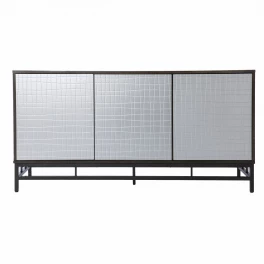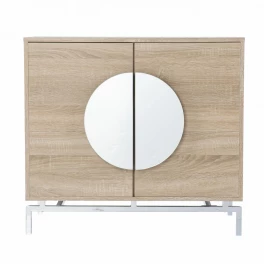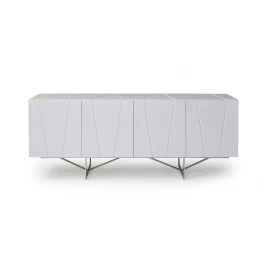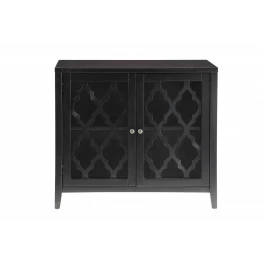A kitchen island can be the most versatile part of a kitchen design. It can play the role of cabinetry, counter space, appliance station, workspace, or seating space — or all of the above. But just because it can play those roles doesn’t mean it should. Getting all the “bells and whistles” just because you can isn’t necessarily the best decision.
In fact, one of the biggest mistakes you can make when designing a kitchen is choosing the wrong kitchen island. Because the island is usually the central hub of a kitchen, if it’s off, the whole kitchen will be off. Making the wrong island choice is much like stranding yourself on a real island with no food or fresh water.
Avoid creating a “Kitchen Castaway Catastrophe” by using the following ten guidelines to choose the best kitchen island to meet your needs.
1. Size Matters
A huge kitchen island is beautiful and convenient, of course — if you have the space for one.

Photo by Breadmaker on Shutterstock
Ideally, you should have no less than 36 to 48 inches of space between opposing counter areas or between an island and another counter in the kitchen. If you’ve ever done the “annoying kitchen dance” with a fellow cook when you’re both trying to work at the same time, you already know the value of ample space between counters. So just because you may think you want to go big with a kitchen island, that doesn’t mean you should. Choose your island to fit the kitchen space you have and leave ample room to work.

Photo by Artazum on Shutterstock
A grand island in the above kitchen would not only look ridiculous but would render the kitchen unusable.
2. Shape Matters Too
Size isn’t the only dimensional decision you need to make about your kitchen island. You need to consider shape as well. Obviously, the kitchen’s shape will determine the island shape. Long and narrow needs long and narrow. Square needs square, or at least square-ish.

Photo by Artazum on Shutterstock
Notice how curving the front edge of the above island softens its look and creates more walking space in the kitchen.
3. Open or Closed?
The configuration of the island’s base can be anything from solid cabinetry to shelving to a narrow pedestal functioning as a foundation for counter space. How do you know what is best?
Generally, bigger and brighter kitchens can handle the solid form of all cabinetry in an island.

Photo by Artazum on Shutterstock
You can also get away with a cabinet-based island in a kitchen with dark cabinetry if you have plenty of floor space around it.

Photo by Artazum on Shutterstock
Smaller kitchens are better served by islands with some open space under the counter. Shelving in an island lightens the visual weight of the island so it doesn’t overpower a smaller kitchen space.

Photo by adpePhoto on Shutterstock
More open islands like the one above tend to fit better in modern spaces. Another modern and spare island style is the elongated pedestal base or the counter-only island.

Photo by Mr. Tempter on Shutterstock
These islands are well-suited for tight kitchen areas.
4. One or Two?
So far, I’ve been talking about a kitchen island, but maybe you need two.

Photo by Breadmaker on Shutterstock
The more you cook and entertain the more space you require. Two islands might be what it takes to optimize your kitchen’s functionality.

Photo by pics721 on Shutterstock
5. What’s Your Style?
A kitchen island has to match the home’s architectural style. It does this isn’t only with the size and shape elements discussed above but also with the materials used in the counters and cabinetry. The island’s décor is integral to this blend as well.
A traditional granite-topped island would look totally out of place in an industrial-style loft space, for example. But it can look right at home in a kitchen that combines contemporary with traditional elements.

Photo by Artazum on Shutterstock
For that loft space, you’d want something more cutting edge.
You also need to keep in mind your design style. If your style is minimalist, for instance, your island should match.

Photo by JRP Studio on Shutterstock
If you have one foot in history, you can dress up your island like a grand dame of old.

Photo by Artserstudio on Shutterstock
6. What’s Your Thing?
A good kitchen island is a cook’s perfect partner. What do you do in the kitchen?
Do you cook elaborate meals? You may want an island with a stovetop.

Photo by Jeffrey B. Banke on Shutterstock
Do you bake? You’ll want an island with a large, uninterrupted surface.

Photo by Artazum on Shutterstock
Do you love to fix fresh fruit and veggies? An island with a sink would be a good fit for you.

Photo by Artazum on Shutterstock
If your idea of cooking is picking up the phone to order take-out, your island may just be your dining or entertaining area. If that’s the case, you just want space to spread out food, and you’ll need space for comfortable seating.

Photo by pics721 on Shutterstock
7. Speaking of Seating…
Speaking of seating, the type of “perches” your island can handle is another important consideration.
Do you want your guests to watch you cook? Space for stools should be enough.

Photo by Breadmaker on Shutterstock
If you prefer to cook alone but you occasionally want to pull out a stool to rest, an island that allows you to tuck stools out of the way is perfect for you.

Photo by Breadmaker on Shutterstock
The longer you want butts in seats, the more space you need for comfortable cushioning for said butts. Casual, occasional butt-parking doesn’t need substantial softness.

Photo by Artazum on Shutterstock
Settling in for a meal or a long chat over prolonged food prep, however, is served by space for upholstered chairs that are as close to easy chairs as you can fit into a kitchen.

Photo by BondRocketImages on Shutterstock
8. Just for Looks
If the functionality of a kitchen island isn’t what matters to you, the surface of the island is going to be more important than the configuration. One way to get an artsy impact from that surface is to let it flow over and down the sides of your island.
Do you love a sleek, clean aesthetic? A stream of uninterrupted white may be just right for you.

Photo by Photographee.eu on Shutterstock
Like more color and texture? Do the same thing with a darkly-patterned granite.

Photo by Breadmaker on Shutterstock
The above look turns an island into a work of art.
Another looks-paramount island configuration is one designed to act as a room divider. In open spaces in which the kitchen blends into the dining room or living room, an island that creates a sort of half wall could be what you need.

Photo by Photographee.eu on Shutterstock
The back of the island in the above photo extends above the surface of the island itself, hiding the island’s working area and therefore forming a more pleasing backdrop for the dining area.
9. Glam It Up
You can take the above guideline a bit further with some shiny, eye-catching materials.

Photo by Basileus on Shutterstock
This kind of island is more than just art. It’s an expression of personality.
If flair is important to you, you’ll want an island that’s a showpiece.
10. Don’t Forget Fido
Did you notice something in the double-island photo in Tip 4? Here it is again.
See the little cutout in the island on the right? It has a space for a pet feeding station.

Photo by Breadmaker on Shutterstock
Keeping your animals in mind when you design your island helps you keep a cleaner and more organized kitchen space.
The examples shown in these tips are just a few of the literally thousands of kitchen island styles and configurations available. But now that you know what to focus on when you decide on your shape, style, and materials, the abundance of possibilities won’t overwhelm you.


























